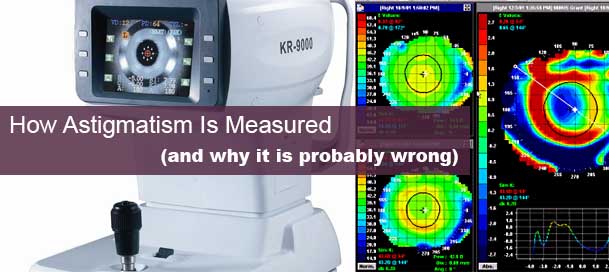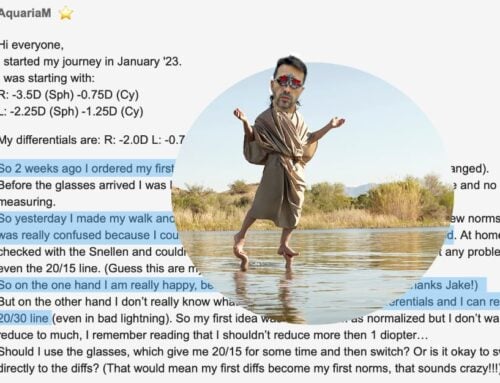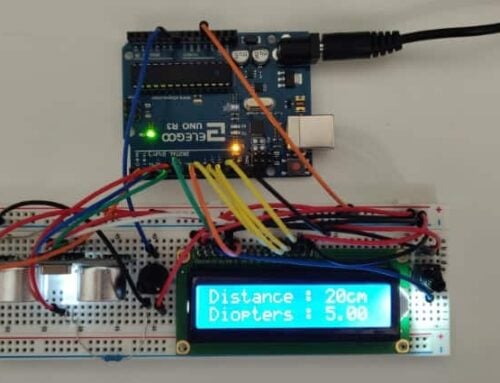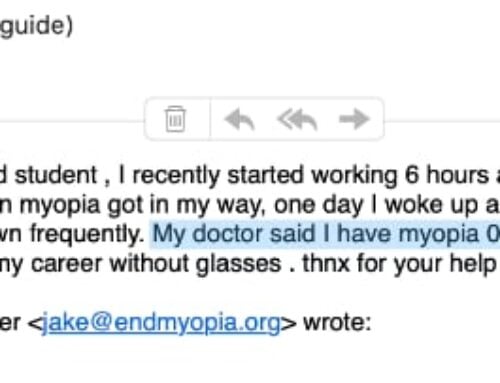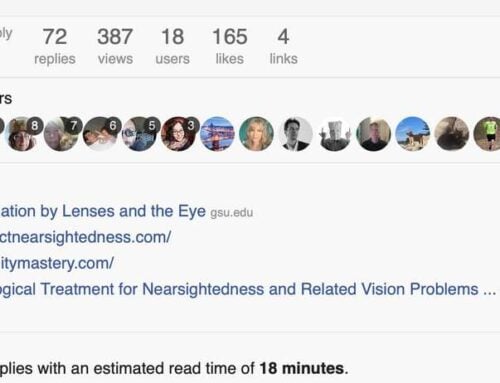If you missed the first installment of the Astigmatism Guide, see it here.
There are three frequently used ways to measure astigmatism. The type of measurement you are likely to get, depends on the kind of facility you visit for the measurement.
Most myopia prescriptions originate from optic shops. If you want to know why I hold this particular type of ‘medical facility’ in some measure of contempt, take a look at this post.
Let’s take a look at the common scenarios:
The Chain Optic Shop
The least trained opticians are frequently found in these types of places. ‘Consultation’ is not part of the profit model, hence the least possible effort is spent in understanding your vision deficiency.
Of course, every place is unique. You might well have a good experience. The chance is fairly great though, that you get the most minimal of possible analysis, to get you to the part where that type of business makes money – selling you glasses.
Here you may get a visual acuity test, which is basically looking at an eye chart, and having test lenses swapped out in front of your eyes. You self assess, what you see best.
Ironically, this would actually be the best option, if it wasn’t for the fact that the tests are often conducted in less than ideal conditions (dark rooms, with just a brightly lit chart, giving you the highest prescription you can take, doing the test late in the day after you already had much eye strain).
A refraction test is also fairly common in these places, though the efficacy of this is questionable. Your focusing muscle is a round muscle, and any variation in its contraction, which may well be temporary, will look like astigmatism in a cursory check.
Better than the chain store, is the next option:
The Small Independent Shop
Here the level of care generally tends to be just a little bit better.
You still have the main objective of the establishment to sell you glasses, but since it is not an operation managed by a corporate office full of accountants and franchise engineers, you may get some more attention.
This isn’t necessarily good news, however. You still tend to get the same tests as at the chain store, which are both flawed since they don’t accurately diagnose astigmatism. Why this is a problem, we will discuss in an upcoming installment of this series.
As before, is the issue of the temporary nature of vision deficiencies. If you have never done a self test for myopia, you should (see how to, here). If you check your centimeter several times a day, you will notice that your eyesight can vary easily by 0.25, 0.50, or even more diopters, in a single day. Take measurements a whole week, and you might be very surprised to see that your eyesight is a rather fluid continuum of better, and worse.
This better-and-worse applies to ‘straight’ myopia (spherical values). Even more so, a murky area, is how much your cornea is actually ‘uneven’ (true astigmatism), versus just a focusing muscle error (temporary). Unless the shop uses a keratometry test, they aren’t really making that distinction. And even if they did, it probably wouldn’t matter (unless you are highly myopic). More on that, in the upcoming installments on this topic.
For a proper eye checkup, you should see this type of practice:
The Ophthalmologist
This is where you should go, for your annual eye check.
The other options are like going to a chain store brake shop, to find out if your car needs new brakes. Will they ever say that you don’t? Of course not. That “free brake checkup” is where they set you up for the sales pitch. You’ll always need brakes, according to the brake shop. And according to the optic shop (a retail store selling glasses, as its raison d’etre), you will always need new glasses.
I recommend ophthalmologist visits, once a year. There is a lot that can go wrong with your eyes.
The only limiting factor to the efficacy of this option, is myopia, and astigmatism. These guys will mean well, but the results are nothing much more than what you can do at home, with a Snellen eyechart, and the centimeter measurement.
Here though, if you find a good practitioner (behavioral ophthalmologists tend to be best), you may at least not get the par-for-the-course prescription increase that you are likely to see at the optic shop.
They also are more likely to use the keratometry test, which does look at your cornea surface, rather than just refraction, or self analysis like the above methods.
The question whether you actually should have an astigmatism correction in your lenses, and why I like to call it the high fructose corn syrup of the vision industry, is coming up in the next installments.
Of note for this post, is that the visual acuity test, and the refraction test are not conclusive indicators of a change in your cornea that qualifies as astigmatism. Please note the gravity of this statement. While those tests can serve as suggestion to further investigate, if you have persistent vision issues not resolved by spherical correction, they are by no means certain (at least not the way they are applied in most cases, by most shops).
As usual, I like to put this in your hands, as to not have to take my word for it:
Is Jake Right?
You may wonder if Jake is just one odd guy, refuting all this multi-thousand dollar equipment, and tens of thousands of optic shops practices. And really, considering this platform (internet), you should maybe question the veracity of my statements. And you can, most easily. Here is how:
Just go to one optic shop, get your vision measured. Get your astigmatism checked. Take the results with you.
Go to another optic shop. Repeat the process.
Now, look at those results. Are they identical?
Do it again. Go to a third optic shop. If you repeat this ten times, at varying times in the day, using whatever equipment they have, how many of the results, would you say, will be identical? Especially on the astigmatism side, you may not even get two identical prescriptions, out of ten.
Ironically enough, you can quite accurately determine your own refractive error, and prescription needs, at home (more so than most shops will).
You can also order the correct prescriptions, thanks to the Internet.
In Conclusion
So, the astigmatism measurement is flawed. You want to reduce this kind of prescription error, in front of your eyes all day every day, as much as possible. Look for the upcoming installments in this series, to cover the remaining topics:
2. Astigmatism, the high fructose corn syrup of the vision industry.
3. Should you actually use astigmatism correction in your lenses?
4. How to cure your astigmatism
5. Astigmatism and the problem with close-up focus
6. Astigmatism in children
Measure Your Astigmatism At Home
** Update ** Here’s a DIY tool you can print out to measure your own astigmatism quite accurately!
Cheers,
-Jake

